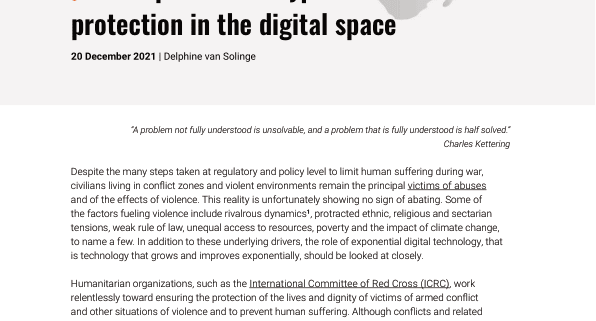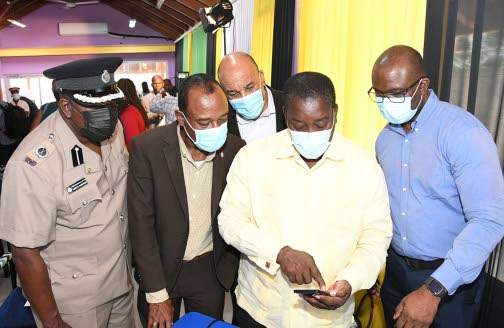The hope and the hype – humanitarian protection in the digital space – World
INTRODUCTION
Despite the many steps taken at regulatory and policy level to limit human suffering during war, civilians living in conflict zones and violent environments remain the principal victims of abuses and of the effects of violence. This reality is unfortunately showing no sign of abating. Some of the factors fueling violence include rivalrous dynamics, protracted ethnic, religious and sectarian tensions, weak rule of law, unequal access to resources, poverty and the impact of climate change, to name a few. In addition to these underlying drivers, the role of exponential digital technology, that is technology that grows and improves exponentially, should be looked at closely.
Humanitarian organizations, such as the International Committee of Red Cross (ICRC), work relentlessly toward ensuring the protection of the lives and dignity of victims of armed conflict and other situations of violence and to prevent human suffering. Although conflicts and related humanitarian harms are still manifesting primarily in the physical world, recent technological developments have introduced new layers of complexity to the way conflicts and violence play out and the way in which they may adversely affect the lives and safety of civilian populations on the ground.
“Protecting people” is at the heart of the ICRC’s mandate. It is a complex area of work that must constantly adapt to evolving realities. This has led to new activities, as well as continuous reflections and engagement on the development and application of international humanitarian law (IHL), humanitarian policies and programs, and operational standards. Understanding new digital challenges and their different implications is therefore critical for the ICRC and humanitarian protection responders, as they begin to devise ways to address these challenges.
DIGITAL RISKS: WHAT HAVE WE OBSERVED?
While digital technologies can help improve the lives of individuals and communities affected by war and violence, depending on their uses they can also create additional and dire risks.
Technological advances have enabled new means and methods of warfare, such as cyber-attacks, which today can disrupt or compromise…

